
Biomaterials at the Heart of Regeneration
Ingenious scaffolds, gels, and matrices are giving cardiac regenerative medicine a boost. Here, three pioneering researchers share how they are taking inspiration from nature, improving delivery, and speeding translation of novel engineered materials – from injection-molded heart valves to cell-delivery patches – for cardiac care.
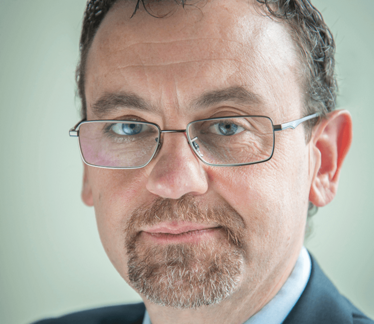
Are we ready for the regenerative medicine revolution?
With Matteo Santin
Regenerative medicine has the aim of “regenerating” damaged tissues rather than “replacing” them with implanted medical devices. This revolutionary approach is particularly relevant in developing new therapies to treat heart pathologies, and is a big focus for the field of cardiac biomaterials. Indeed, as President of the European Society for Biomaterials (ESB), I’ve launched a survey amongst the biomaterials community in Europe, and the preliminary data seem to show that a majority of our researchers are now focusing on developing new biomaterials for regenerative medicine, rather than for medical devices.
Relevant to cardiac tissue regeneration is the work that many researchers are carrying out in the development of biomaterials that can control the inflammatory response triggered by tissue damage. The aim is to direct the inflammatory cells towards the production of growth factors that favor the regeneration of tissue without the occurrence of scarring; this will restore the full physiological function of infarcted myocardial areas. Likewise, biomaterials have been designed that can promote tissue regeneration by controlling the activity of host or transplanted stem cells. These cells can be either recruited or transplanted at the site of infarction to deposit new tissue and stimulate the formation of new blood vessels necessary to ensure the long-term survival of the damaged tissue.
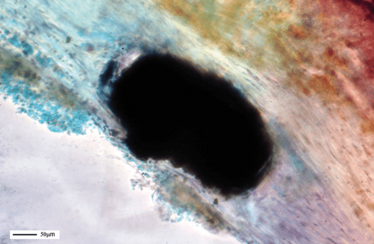
Cross section of a stent strut embedded in a coronary artery wall
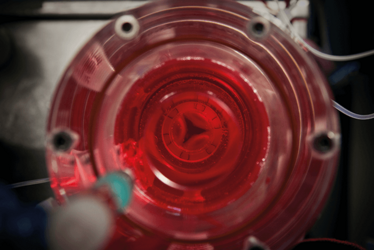
Despite the encouraging results achieved by many projects worldwide, clinical translation of innovation in the field of regenerative medicine is difficult for two main reasons: limited private investment, and a restrictive regulatory framework. These two points are linked because the regulatory framework of regenerative medicine products – which the European Commission classifies as “advanced therapy medicinal products” – presents gray areas that make the process of approval uncertain, cumbersome, and therefore not attractive for investors. There are not many specialized venture capital firms in the field of regenerative medicine; most perceive this type of innovation as too risky for their business. We are very supportive of any regulatory framework that protects our patients, and we don’t want research that isn’t thorough or that could put patients’ lives at risk. On the other hand, if regulation is risk adverse and vague in its prescriptions, it makes translation more expensive and product development will appear riskier than it actually is.
From a scientific and regulatory point of view, a major problem is variability. For example, we have seen some fantastic proof-of-concept work involving decellularizing cardiac tissue and recellularizing it with cells from the recipient (1). But there is a question mark over whether these scaffolds of biological origin could ever have the batch-to-batch reproducibility necessary to secure a consistent clinical outcome in all patients. That is why the European Commission is pushing for more focus on research into extracellular matrix analogues of synthetic origin, which are highly reproducible in their manufacturing process. Their availability will reduce the risk of failures of biomaterial scaffolds, such as those used in the manufacture of cardiac patches. We believe this is the way forward.
Matteo Santin is President of the European Society for Biomaterials, and Lead Professor of the Brighton Centre for Regenerative Medicine, University of Brighton, UK.
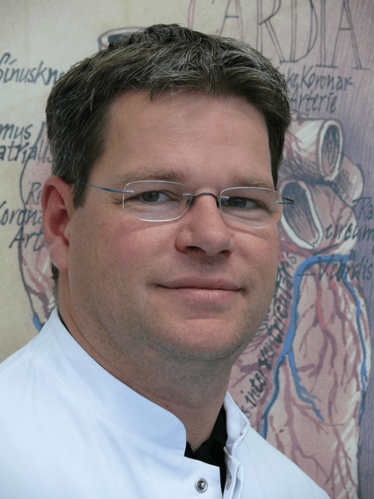
How can bio-inspired textile scaffolds be used to engineer stronger heart valves?
With Stefan Jockenhövel
My background is that of a cardio-thoracic surgeon, but I was rather abruptly pulled into the field of tissue engineering by a former professor of mine. He returned from a conference for heart surgeons in 1999 proclaiming that tissue engineering was the future, and promptly put me in charge of this new research. I knew nothing about the field, so I spent some time at the University Hospital of Zurich to learn more. There, I collaborated with material scientist Jeff Hubbell, who had done a lot of work with fibrin hydrogels; his lab was just across the road from mine. Purely biological implants often lack the reproducibility we need, whereas purely material implants can’t always provide high biocompatibility – it made sense to me that the ideal structure is a combination of the two.
Back home in Aachen, I developed an injection molding technique to make complex hydrogel structures – scaffolds for tissue engineered heart valves and vascular grafts. However, I could see that the hydrogel alone could not withstand the high pressures of the heart. I had to step back and think about the challenge from a different angle. Eventually, I found inspiration from the textile industry. To make tough, lightweight materials – for example, in the aerospace industry – textiles are used to form a carbon fiber composite structure. We began researching textiles with different compositions to find the best fit for our hydrogel and the high-pressure heart valve environment. With European funding, a few years ago we fabricated the first textile-reinforced tissue engineered vascular graft, followed by a tissue engineered mitral-valve, by integrating a textile mesh inside the heart valve (2).
As I always tell my students, humans are textile products. Fibers define the mechanical properties of our bodies. So our next goal is creating bio-inspired textile scaffolds, which mimic the patterns of fibers in the human body.
The individual variety that inevitably comes with the biological component of biohybrid implants is still a challenge. We have a pre-conditioning protocol that each implant goes through, which consists of the same process of increasing the load (pressure and flow) on the construct in a defined time schedule. But one person’s cells may take five days, and another person’s might take two weeks. We’d like to eventually automate the pre-conditioning procedure to make it faster and more efficient, but the individualization of cells makes this a difficult task.
Even without working with living cells, clinical translation of cardiac devices is always hard because regulation is – understandably – so strict. If a bone graft fails, it’s a shame. If a cardiac device fails, a patient may die. Add to that the variability and the potential for inflammation, even with a patient’s own cells, and there are a lot of hurdles to overcome. But I believe we’ll get there in the next few years.
As for the future of the field overall, I hope that there will be more preclinical and clinical studies of implants, which we’re beginning to see from brave surgeons in the US. In the long term, I think we’ll see cardiac medicine move towards an even more personalized therapy approach where not only the cells, but also the materials used, are tailored to each patient.
Stefan Jockenhövel is Director of the Department of Biohybrid & Medical Textiles, RWTH Aachen University, Germany, and Director of the Aachan-Maastricht Institute for Biobased Materials, Maastricht University, the Netherlands.
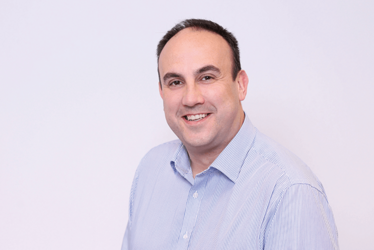
How can we accelerate clinical translation of regenerative therapies for heart attack?
With Garry Duffy
I’ve always been interested in the translational aspects of stem cell therapy, and over a decade of research into stem cell delivery in cardiac repair has given me an appreciation of the size of the challenge – and of the opportunity.
One of the biggest hurdles is cell retention. Right now, around 75 percent of cells are lost after implantation. The problem with getting cell therapies into the heart (and getting them to stay there) is the fact that you’re dealing with a beating organ. Any cells you inject into the heart are simply going to be squirted back out. So to improve retention we have to find ways to avoid leakage of the cells away from the injection site, and promote cell survival.
At the Royal College of Surgeons in Ireland, we’ve been working as part of a research consortium called Advanced Materials for Cardiac Regeneration (AMCARE) to tackle these problems head on. To combat cell site leakage, we have developed biomaterial gels to keep the cells at the site of injury. And our AMCARE colleagues at Celyad have created a specially-designed injection catheter to help anchor the hydrogel to the heart wall and increase cell retention. The catheter enters an artery in the thigh and is fed up to the heart.
Keeping the cells alive during what we call “the integration phase” was a bigger issue to overcome because, after a heart attack, the environment within the heart is quite hostile for cells. To help the cells gain a foothold, we functionalized our gel to contain peptide sequences for the cells to latch on to, which helps them withstand the pressure.
As well as acute cardiac injuries requiring the delivery of cells to the heart wall, we also want to treat patients with larger cardiac infarcts, which are likely to need delivery over a larger area and for a longer time. For these larger infarcts, we would carry out a mini-thoracotomy (create a small space in the chest wall) and deliver a cardiac biomaterial patch to the heart’s surface. The patch essentially contains the same number of cells and materials as the injection; it’s just using a different delivery method to get the most efficient clinical results.
I believe that cell therapy and tissue engineering approaches both have an important role to play, at different stages of disease. For a more acute cardiac setting like a heart attack, I think that regenerative medicine may be the better choice, but for chronic conditions, where you’ve got a wider area to treat or remodeling is needed, grafts can fulfill that need.
To allow clinical translation, we will need to lower costs. In part, that comes back to the issue of cell retention – it’s not sustainable to lose 75 percent of your product. But as we improve retention and adapt the dosing regime, costs should come down. We can also speed up translation by giving clinicians tools that are intuitive and aligned with current treatment regimes. The catheters and medical devices we work with are similar to existing products that cardiac surgeons are already comfortable with. The goal of the AMCARE project is to provide the tools to help clinicians deliver these therapies. I think if we can overcome the delivery issues, it will encourage more widespread clinical adoption.
Garry Duffy is a researcher at the Royal College of Surgeons in Ireland.
- JP Guyette et al., “Bioengineering human myocardium on native extracellular matrix”, Circ Res, 118, 56-72 (2016). PMID: 26503464.
- M Weber et al., “Tissue-engineered fibrin-based heart valve with a tubular leaflet design”, Tissue Eng Part C Methods, 20, 265-275 (2014). PMID: 23829551.
Matteo Santin is the President of the European Society for Biomaterials
Stefan Jockenhövel is the Director of the Department of Biohybrid & Medical Textiles at RWTH Aachen University
Garry Duffy is a researcher at the Royal College of Surgeons in Ireland.















